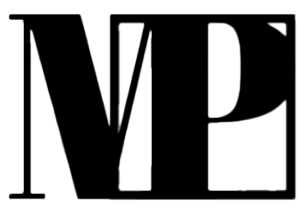A #2 - Design
BE HYPERBOLIC/EXAGGERATE
Ensure Engagement by Making (Some) Visual Attributes Larger or More Pronounced/Conspicuous
BE HYPERBOLIC/EXAGGERATE
Ensure Engagement by Making (Some) Visual Attributes Larger or More Pronounced/Conspicuous
Planet Earth is quite the magical place, isn't it? The fauna of nature; the multi-facetedness of the animal kingdom; and, last but not the least, and diversity of cultures.
Let's talk about the latter, though.
Unfortunately, the fact that a great deal of variability exists BETWEEN cultures doesn't mean that variability exists WITHIN them; that is, human beings being different from one another - at least not if we are to believe the norms and values, openly or unspokenly, taught to the individual in many sociocultural settings.
In the United States, it is taken for granted that everyone should lead a life of expressing and pursuing their individual wants and needs - even at the shagrin of the collective (as long as you don't hurt yourself or others, of course).
But as anyone that's been around the world once or twice has surely noted, such is not the case in many corners of the globe. In Japan, people are taught that "the nail that stands out is the one that gets the hammer," outright teaching people that standing out is detrimental.
Even in many parts of the English-speaking world, the TALLY POPPY SYNDROME (an agricultural analogy where the tallest flower is the one that that tastes the scythe during harvest) less directly, yet oh so clearly, that it's better to go with the crowd than carving your own path.
So, what does this have to do with UI/UX design? I'm glad you asked, as it is highly pertinent of some of its facets - including graphic design.
When designing an illustration - let's say, for the moment being, an anthropomorphic animal character - it's easy to get stuck in TUNNEL VISION.
Interestingly, I'm not referring to the notion that you've let a client's wishes dictate, in minute detail, how to design your illustration and end up with something so painfully cookiecutter-esque that neither you, nor the client, is satisfied with it.
In fact, I'm not even referring to carefully molding your own unique vision before you - because the original idea was so tantalizing, or because you've sunk so many hours into it - put wishful thinking over objective reality, ending up with an ineffectual, and ultimately useless, design.
Even more fundamentally, any work of graphic art - unless viewable exclusively in one size, which is rarely the case - needs to look good in any proportion. That is, even if you blow it up to preposterously large levels or an infitesimally small one, it should look good.
No, it's not necessarily required that you can make out individual letters if your design involves typography, or that you can readily recognize every layer of shade of color used at first gaze.
But at bare minimum, what you're laying eyes on shouldn't look unfinished, cluttered, or - worse yet - ugly.
If you're willing to indulge me, fix your eyes on the illustration to your left WITHOUT gazing on its rightside counterpart (you're not some no-good, dirty cheater, are you?).
You've got a logo with some good coloring, some well thought-out typography - the whole nine yards, am I right?
Ok - now look to your right. Although the logo works well in both its intended size AND blown up by a factor of x2, the small one leaves a lot to be desired.
First of all, it looks messy because there's too many shapes interacting. Secondly, there's too many color shades prresent, cannibalizing each other. And as if that wasn't enough, the size of the font is not proportional with the rest of the logo's design.
The moral of the story is as follows:
When it comes to the social and culture behaviors you adhere to based on where you come of age, be my guest and do exactly as you please. It's none or my business what you think or feel, nor is it anyone else's.
But if you're taking on a UI/UX design project - especially one involving graphic design - it is paramount that you leave any semblance of conformity you've accrued at the door.
Only then can you come anywhere close to your potential - and create something truly great along the way.
